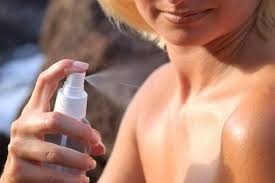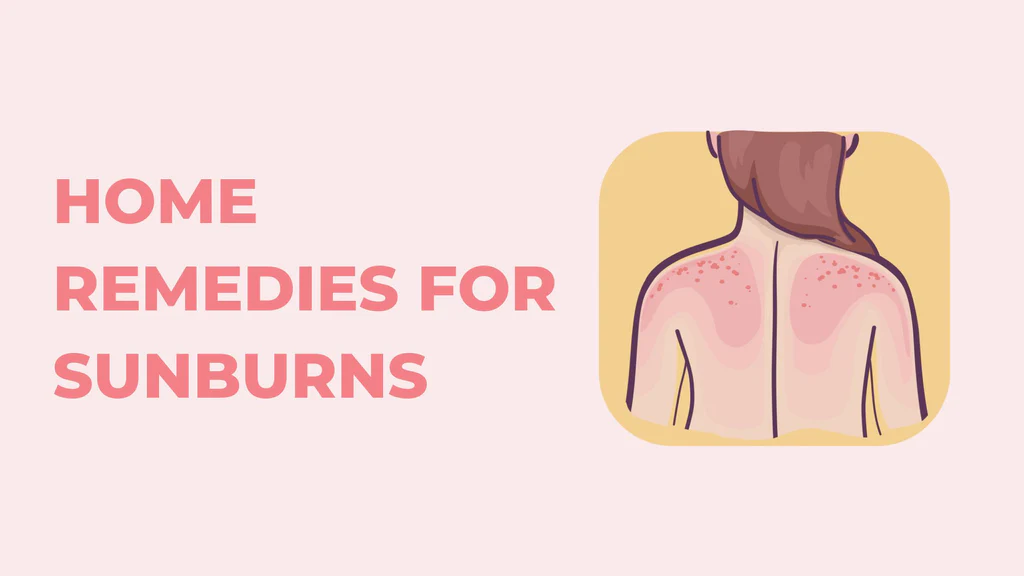Sunburn is a common skin condition caused by overexposure to ultraviolet (UV) rays from the sun or artificial sources like tanning beds. It can lead to redness, pain, swelling, and even blistering in severe cases. While prevention is the best approach, sometimes sunburn is unavoidable. This comprehensive guide explores sunburn relief methods, home remedies, medical treatments, and prevention tips to help you recover faster and protect your skin from future damage.
Understanding Sunburn: Causes and Symptoms

What Causes Sunburn?
Sunburn occurs when UV radiation damages the DNA in skin cells, triggering an inflammatory response. The severity depends on:
- Skin type (fair skin burns more easily)
- UV intensity (higher at midday and in tropical regions)
- Duration of exposure
- Lack of sunscreen or protective clothing
Symptoms of Sunburn
- First-degree burns: Redness, tenderness, mild swelling
- Second-degree burns: Severe pain, blistering, peeling skin
- Additional symptoms: Fever, chills, headache (signs of sun poisoning)
Immediate Sunburn Relief: What to Do Right Away

1. Get Out of the Sun
As soon as you notice sunburn, move to shade or indoors to prevent further damage.
2. Cool the Skin
- Cold Compress: Apply a damp cloth soaked in cold water.
- Cool Bath/Shower: Use lukewarm (not icy) water to avoid shock.
- Avoid Ice Directly on Skin: It can worsen damage.
3. Hydrate Inside and Out
- Drink Water: Sunburn dehydrates the body; replenish fluids.
- Moisturize: Use aloe vera gel or fragrance-free lotions to soothe skin.
4. Anti-Inflammatory Measures
- Over-the-counter (OTC) Pain Relievers: Ibuprofen or aspirin reduce swelling.
- Topical Hydrocortisone Cream: Helps with inflammation (consult a doctor first).
Best Home Remedies for Sunburn Relief

1. Aloe Vera
- Why it works: Contains anti-inflammatory and cooling properties.
- How to use: Apply pure aloe vera gel directly to the burn.
2. Coconut Oil
- Benefits: Moisturizes and may reduce peeling.
- Best for: Healing phase (avoid if skin is blistered).
3. Oatmeal Bath
- How it helps: Soothes itching and irritation.
- Method: Add colloidal oatmeal to a cool bath and soak for 15 minutes.
4. Honey
- Antibacterial & Healing: Raw honey can prevent infection in mild burns.
- Application: Dab a thin layer on affected areas.
5. Cucumber Slices or Paste
- Cooling effect: Reduces redness and inflammation.
- Usage: Blend cucumber into a paste or apply slices directly.
6. Black Tea Compress
- Tannic acid benefits: Helps repair skin damage.
- How to use: Brew tea, cool, and apply with a cloth.
7. Witch Hazel
- Natural astringent: Reduces swelling and discomfort.
- Application: Apply with a cotton pad.
Medical Treatments for Severe Sunburn

If home remedies aren’t enough, consider:
1. Prescription Steroid Creams
- For extreme inflammation and pain.
2. Oral Pain Relievers
- Stronger NSAIDs if OTC options aren’t effective.
3. IV Fluids (For Severe Dehydration)
- Needed in cases of sun poisoning (fever, dizziness).
4. Antibiotics (If Infection Occurs)
- Required if blisters break and become infected.
What NOT to Do for Sunburn Relief
Avoid these common mistakes that can worsen sunburn:
- Popping blisters (increases infection risk).
- Using petroleum-based products (traps heat).
- Exfoliating peeling skin (let it shed naturally).
- Applying alcohol or harsh chemicals (dries out skin).
How Long Does Sunburn Last? Healing Timeline
- Mild sunburn: 3–5 days (peeling may last a week).
- Moderate sunburn: Up to 7–10 days.
- Severe sunburn (with blisters): 2 weeks or more.
Preventing Sunburn: Best Practices
1. Use Broad-Spectrum Sunscreen
- SPF 30+, reapplied every 2 hours (or after swimming).
2. Wear Protective Clothing
- UPF-rated clothing, wide-brimmed hats, and sunglasses.
3. Seek Shade
- Avoid direct sun between 10 AM – 4 PM when UV rays are strongest.
4. Stay Hydrated
- Drink plenty of water to keep skin resilient.
5. Check UV Index
- Use weather apps to monitor daily UV levels.
When to See a Doctor
Seek medical help if you experience:
- Severe blistering (covering large areas).
- High fever or extreme pain.
- Signs of infection (pus, red streaks).
- Dizziness or confusion (possible heatstroke).
Conclusion
Sunburn can be painful, but with the right sunburn relief strategies, you can ease discomfort and speed up healing. From aloe vera and oatmeal baths to medical treatments for severe cases, this guide covers all you need to recover effectively. Remember, prevention is key—always protect your skin with sunscreen, clothing, and shade to avoid future burns.
By following these tips, you can enjoy the sun safely while keeping your skin healthy and burn-free!

